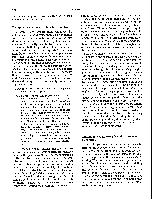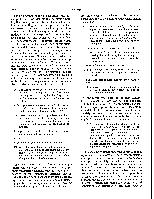

















0 Academy of Management Journal
2000, vol. 43, No. 1, 9-25.
UNDERSTANDING HUMAN COMPETENCE AT WORK:
AN INTERPRETATIVE APPROACH
JÖRGEN SANDBERG
Stockholm School of Economics
In the prevalent rationalistic approaches, human competence at work is seen as constituted by a specific set of attributes, such as the knowledge and skills used in performing particular work. As an alternative to the rationalistic approaches, an interpretative approach, "phenomenography," is proposed and explored here. Findings suggest that the meaning work takes on for workers in their experience of it, rather than a specific set of attributes, constitutes competence. More specifically, the results demonstrate that the particular way of conceiving of work delimits certain attributes as essential and organizes them into a distinctive structure of competence at work.
Organizational actions such as producing cars, treating illnesses,
transporting, and educating are always based on human competence. A fundamental
managerial problem is to develop human competence at work in a way that enables
an organization to remain viable. Today, developing competence is also becoming
an increasingly important issue. Rapid technological change within areas such
as microelectronics and communications in combination with growth in service
and knowledge-based industries (Ekstedt, 1988; Eliasson, Fölster, Lindberg,
Pousette, ![]() & Taymaz, 1990; Neef, 1998) has led to the need for an ongoing
development of competence for competitive success (Kanter, 1983; Porter, 1990).
Thus, from a managerial perspective, this need leads to a further demand for
efficient ways to manage training and development in organizations. However, in
order to manage training and development efficiently, managers need to
understand what constitutes human competence at work. Without such an
understanding, competence development cannot be managed effectively and, therefore, effectiveness
in organizations cannot be achieved.
& Taymaz, 1990; Neef, 1998) has led to the need for an ongoing
development of competence for competitive success (Kanter, 1983; Porter, 1990).
Thus, from a managerial perspective, this need leads to a further demand for
efficient ways to manage training and development in organizations. However, in
order to manage training and development efficiently, managers need to
understand what constitutes human competence at work. Without such an
understanding, competence development cannot be managed effectively and, therefore, effectiveness
in organizations cannot be achieved.
The aim of this study was to investigate what constitutes human competence at work. In this artiCle, an interpretative approach is proposed as an alternative to the prevalent rationalistic approaches. In the rationalistic approaches, competence is seen as constituted by specific sets of attributes, such as the knowledge and skills used in performing particular
|
|
work. Approaches to competence developed within the interpretative research tradition are reviewed to further clarify what constitutes competence. On the basis of that review, I propose an interpretative approach, "phenomenography," and report an empirical examination of that approach conducted through a competence analysis of engine optimizers at the Volvo Car Corporation in Sweden.
IDENTIFYING HUMAN CONOETENCE:
A CLASSIC MANAGERIAL PROBLEM
![]()
Only recently has the concept of competence been used more systematically in management. Primarily, it is the concept's focus on the relation between person and work that researchers such as McClelland (1973), Boyatzis (1982), Kolb (1984), Morgan (1988), and Nordhaug (1993) have found attractive when identifying and describing essential human knowledge and skills at work. As Morgan (1988) argued, the concept of competence encourages scholars to think not only about knowledge itself, but also about the knowledge that is required in competent work performance. Hence, the expression "human competence at work" used in this study does not refer to all knowledge and skills, but to those people use when working.
Although the concept of competence has not been in frequent use until recently, the problem of identifying what constitutes competence at work is not new. Taylor (1911) was one of the first in modern times to address this problem. When working as an engineer, he noticed a large difference between the least and most competent workers' ways of accomplishing their work. To enable the identification of what constituted competence among the most competent workers, Taylor argued for leadership based on scientific principles from the rational9
istic tradition. Drawing on those principles, he elaborated his well-known "time and motion studies." Taylor proposed that by using these studies, managers should be able to identify what constitutes workers' competence by classifying, tabulating and reducing it to rules, laws, and formulas. Using these descriptions of competence as a starting point, Taylor demonstrated that managers could set up systematic training and development activities that yielded improvements in workers' competence and consequently, increased effectiveness in organizations.
Уважаемый посетитель!
Чтобы распечатать файл, скачайте его (в формате Word).
Ссылка на скачивание - внизу страницы.